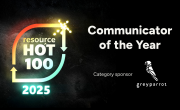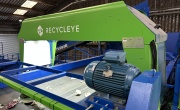EMF launches circular buildings toolkit
The Ellen MacArthur Foundation (EMF) has today (15 March) launched a ‘circular buildings toolkit’ to tackle the industry’s ‘take, make, waste mentality’, in partnership with design company Arup.
 The toolkit provides guidance and real-life examples of how the principles of circular economy can be applied to building design and operations. It includes best practice case studies from recent projects around the world, spotlighting different circular economy concepts. These include borrowed building materials in a temporary structure in the Netherlands, a modular lighting system in Seoul, and prefabricated timber structures in London.
The toolkit provides guidance and real-life examples of how the principles of circular economy can be applied to building design and operations. It includes best practice case studies from recent projects around the world, spotlighting different circular economy concepts. These include borrowed building materials in a temporary structure in the Netherlands, a modular lighting system in Seoul, and prefabricated timber structures in London.
The built environment sector is a major consumer of natural resources, reportedly responsible for almost 50 per cent of the consumption of raw materials, and around 40 per cent of global CO2 emissions. Although the building industry is focused on energy efficiency, EMF notes that this is ‘only part of the challenge it faces’, with almost half of global greenhouse gas emissions coming from embodied carbon emitted through the production and operational processes.
EMF’s toolkit seeks to move the industry away from the ‘current take, make, waste’ model of linear consumption, minimising waste by keeping products and materials in use for longer, from the beginning of the design process.
The toolkit has been used by Arup and Futur2K during the design and construction of a prototype for a new circular building system in Essen, Germany, to be unveiled in May. Learnings and experience from this project, EMF states, will be added to the live toolkit, the resource acting as a ‘global bank of knowledge – effectively open-sourcing best practice’.
Eva Hinkers, Europe Region Chair, Arup said: “Buildings are a major contributor to carbon and environmental problems today, consuming around 40 per cent of the world’s raw materials. But it doesn’t need to be this way.
“The circular economy can help the real estate sector generate more value – economic, social – as it moves towards climate neutrality. Circular approaches allow us to reimagine the building as an asset bank, so that materials can be repurposed and stay in use for longer.
“We hope this toolkit helps the industry move beyond roadmaps and blueprints and makes circular economy a reality.”
Andrew Morlet, CEO, Ellen MacArthur Foundation, added: "The global transition to a circular economy – an economy designed to eliminate waste and pollution, circulate products and materials, and regenerate nature – is vital in order to tackle global challenges such as climate change and biodiversity loss.
“We have seen increased energy efficiency in the built environment sector, but the transition to renewable energy and energy efficiency is only half the story. 45 per cent of global greenhouse gas emissions come from the way we make and use things. We need a circular economy to address these emissions.
“We welcome the opportunity to collaborate with Arup – a Partner in our network of businesses, policymakers, academia, and thought leaders – in the development of this toolkit. We believe it will play a valuable role in supporting the built environment industry to transition to a circular economy that will benefit the economy, environment, and society."






